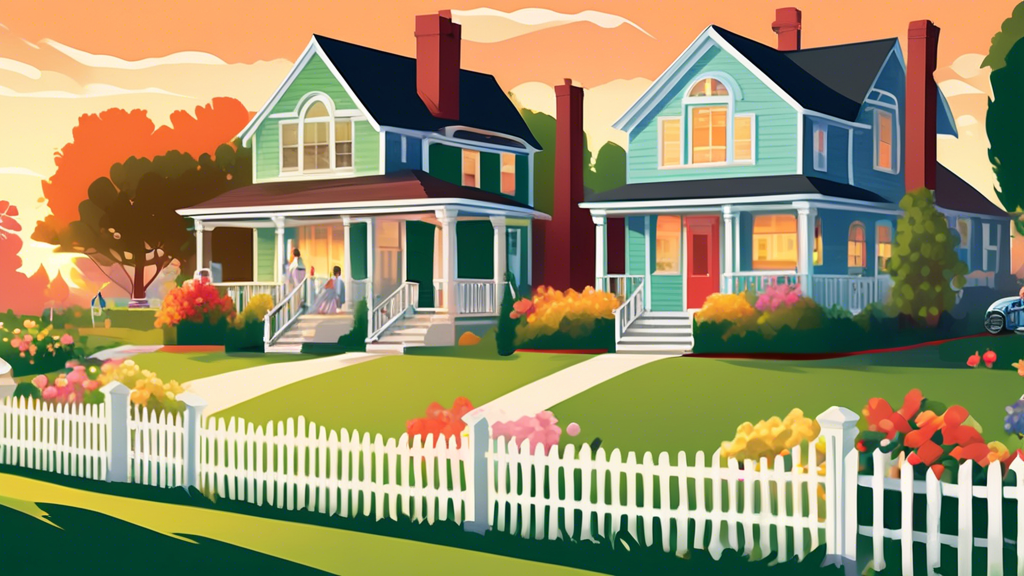Unpacking the Symbolism Behind the White Picket Fence
Introduction to the White Picket Fence
The image of a white picket fence is an iconic symbol deeply ingrained in American culture. Traditionally bordering quaint houses with manicured lawns, this type of fence has evolved beyond its physical attributes to represent a myriad of philosophical, cultural, and social ideals. Examining the symbolism behind the white picket fence provides insight into its enduring appeal and how it reflects broader societal aspirations and values.
The Historical Origins of the White Picket Fence
Tracing back to the colonial era in America, picket fences were first used for their practical function of demarcating property lines and keeping livestock from wandering. Originally, these fences were not always painted white and were more about utility than aesthetics. Over time, white became the preferred color as it symbolized purity and simplicity, aligning with the Colonial Revival architecture popular in the early 20th century. By painting the fences white, homeowners could signal their stability and commitment to maintaining their property – an echo of broader social values of the time.
The Expansion of Suburban America
The post-World War II era witnessed a significant transformation in the symbolism of the white picket fence, coinciding with the boom in suburban development. As millions of Americans moved to suburbs, the white picket fence came to epitomize the ideal suburban life. It represented the American Dream—a visual representation of achieving stability, success, and happiness through homeownership.
The fence clearly marked the homeowner’s territory, providing a sense of security and privacy, yet its low height and open design also suggested a welcoming feeling of community and neighborliness.
Cultural and Psychological Symbolism
The symbolism of the white picket fence is multifaceted, interweaving cultural narratives with deep psychological implications. Culturally, it denotes a sense of achievement, the realization of the American Dream where one works hard, raises a family, and owns a comfortable home. Psychologically, it serves as a boundary that both protects and isolates, signifying the homeowner’s desire to safeguard their family and personal space while also marking their integration into societal norms and expectations.
Representation in Media and Literature
In media and literature, the white picket fence has often been utilized to represent an idyllic, utopian life that may hide underlying issues. Films, television shows, and books have used it to both embody and criticize the often unattainable ideal of perfect suburban life. It can be seen as a critique of societal pressures to conform to specific standards of success and happiness, suggesting that the pursuit of this ideal might lead to conformity and loss of individuality.
Modern Interpretations and Shifts in Perception
In contemporary times, the symbolism of the white picket fence has begun to shift. While it still stands as an emblem of home ownership and the pursuit of the American Dream for many, changing societal values have led to a reevaluation of this dreamed-up perfection. The increase in urban living, the environmental impact of suburban sprawl, and a moving away from materialistic values towards more sustainable and diverse lifestyles have all influenced the way the white picket fence is perceived in modern society.
Current Trends and Future Prospects
Today, while some still aspire to own a home bordered by a white picket fence, others view it as a symbol of an outdated and unattainable standard. For newer generations, the dream might no longer revolve around traditional home ownership but may focus more on experiences, travel, or urban lifestyle choices. Moreover, as America becomes more culturally diverse, the white picket fence symbol increasingly integrates or conflicts with different cultural symbols and practices.
Conclusion
The white picket fence is more than just a physical barrier; it is a powerful cultural symbol that has reflected and shaped American societal values for centuries. Its significance has evolved from a simple property demarcation to a complex representation of the American Dream, imbued with ideals, aspirations, and critiques. As cultural dynamics continue to shift, the symbolism of the white picket fence will undoubtedly adapt, offering new meanings for future generations.
Understanding the Meaning Behind ‘Rose-Colored Glasses’
Understanding the Meaning Behind Dreaming of Vomiting







